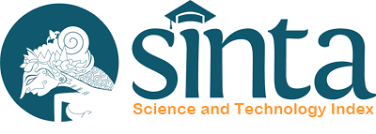Pelatihan Penggunaan Media Pembelajaran Tentang Budaya Keris Berbasis Virtual Reality di Sekolah Dasar
Abstract
The utilization of Virtual Reality (VR) technology for educational purposes, namely in instructing Indonesian culture, particularly the Keris culture, holds significant importance. This is due mainly to the limited dissemination of knowledge on Keris and traditional weaponry inside educational institutions, as they are not currently incorporated into the curriculum. The Universitas Negeri Semarang and Politeknik Negeri Jakarta teams have developed interactive learning media focusing on virtual reality (VR) technology. The primary objective of the virtual reality (VR) application is to provide a comprehensive exploration of Keris culture, intending to foster a deeper understanding and appreciation of Indonesia's rich cultural legacy among the younger generation, mainly elementary school pupils. The approach involves offering instructional sessions to students and educators, focusing on utilizing virtual reality (VR) technology as an educational instrument. Training activities were provided at Barusari 02 Elementary School in South Semarang. Considering technological accessibility is crucial to ensuring that all students can access educational materials without obstacles. The findings derived from administering pre- and post-assessments to primary school children indicate that Virtual Reality Technology has the potential to engender greater interest among pupils in acquainting themselves with Indonesian culture. Most participants, above 80%, expressed a strong positive inclination towards utilizing Virtual Reality (VR) Technology to acquire knowledge about various cultural aspects. By providing appropriate support and adopting a comprehensive approach, virtual reality (VR) has the potential to serve as an efficacious instrument for enhancing students' comprehension and admiration of Indonesian culture.
Downloads
References
Antara, I. P. H., Darmawiguna, I. G. M., & Sunarya, I. M. G. (2015a). Pengembangan Aplikasi Markerless Augmented Reality Pengenalan Keris Dan Proses Pembuatan Keris. 4, 8.
Antara, I. P. H., Darmawiguna, I. G. M., & Sunarya, I. M. G. (2015b). Pengembangan Aplikasi Markerless Augmented Reality Pengenalan Keris Dan Proses Pembuatan Keris. 4, 8.
Firmadani, F. (2020). Media Pembelajaran Berbasis Teknologi Sebagai Inovasi Pembelajaran Era Revolusi Industri 4.0. 5.
Kaswidjanti, W. (2014). Implementasi Fuzzy Inference System Metode Tsukamoto Pada Pengambilan Keputusan Pemberian Kredit Pemilikan Rumah. Telematika, 10(2), Article 2. https://doi.org/10.31315/telematika.v10i2.281
Naryanto, R. F., Delimayanti, M. K., Arifin, M. F. A., Hapsoro, B. B., & Herunandi, I. D. (2023). Pendampingan Pemasaran Tempat Kost Berbasis Media Digital Untuk Warga Di Kelurahan Bulustalan Kota Semarang. Dinamisia : Jurnal Pengabdian Kepada Masyarakat, 7(2), 399–409. https://doi.org/10.31849/dinamisia.v7i2.11509
Naryanto, R. F., Delimayanti, M. K., & Herunandi, I. D. (2022). Pelatihan Desain Produk Elektronik untuk Eksplorasi Kompetensi Pemuda Karang Taruna di Rt09/Rw04 Kelurahan Bulustalan Semarang. 5(1).
Naryanto, R. F., Delimayanti, M. K., Kriswanto, K., Indriawan, A. D. N., Sukoco, I., Subagyo, Y., Eko Saputro, W. D., & Athoillah, A. (2022). Sosialisasi Media Edukatif Interaktif “Biopori” Berbasis Virtual Reality Bagi Pemuda Karang Taruna. Adimas : Jurnal Pengabdian Kepada Masyarakat, 6(1), 1–12. https://doi.org/10.24269/adi.v6i1.4146
Naryanto, R. F., Syahriar, F. F., Fauziyah, N., Akbar, M. H., Murniati, M., A’ida, D. N., Amrulloh, M. I. A., Septavian, H., Fikrianza, N. H., & Saputra, D. A. (2023). Workshop Pembuatan Poc (Pupuk Organik Cair) Dengan Media Limbah Rumah Tangga Pada Kader Desa Wringinputih Kecamatan Borobudur Kabupaten Magelang.
Ngaisah, S., Kurniawan, B. A., & Abadi, C. (2021). Implementasi Program Desa Wisata Dalam Menunjang Pelestarian Dan Pengembangan Budaya Keris. 6.
Putri, Y. D. R. (2018). 2D & 3D Modelling Monumen Bersejarah Yogyakarta sebagai Media Edukasi Interaktif berbasis Virtual Reality. 4(1), 7.
Riswandi, B. A., & Hanum, F. F. (2013). Peningkatan Kualitas Siswa Terampil Iptek Dengan Edukasi Komputer Bagi Siswa Sd Di Dusun Wonolelo (2). 2(2), Article 2.
Saputra, K. L., Tasripan, T., & Arifin, A. (2019). Rancang Bangun Kendali Kecepatan Treadmill Menggunakan ECG Yang Divisualisasikan Menggunakan Virtual Reality. Jurnal Teknik ITS, 8(1), A17–A22. https://doi.org/10.12962/j23373539.v8i1.38353
Setyawati, E. (2018). Aplikasi Pengenalan Jenis Keris Tradisional Dengan Menggunakan Augmented Reality Berbasis Android. 6.
Suhaimi, N. S., Mountstephens, J., & Teo, J. (2022). A Dataset for Emotion Recognition Using Virtual Reality and EEG (DER-VREEG): Emotional State Classification Using Low-Cost Wearable VR-EEG Headsets. Big Data and Cognitive Computing, 6(1), 16. https://doi.org/10.3390/bdcc6010016
Tabrani, M. (2018). Penerapan Metode Waterfall Pada Sistem Informasi Inventori Pt. Pangan Sehat Sejahtera. Jurnal Inkofar, 1(2), Article 2. https://doi.org/10.46846/jurnalinkofar.v1i2.12
Winanta, A., Octavia, M., & Kurniawan, M. F. (2020). Peningkatan Pengetahuan Penggunaan Obat untuk Siswa Sekolah Dasar. Berdikari : Jurnal Inovasi dan Penerapan Ipteks, 8(2), Article 2. https://doi.org/10.18196/bdr.8280
Wulandari, G. A. D., Darmawiguna, I. G. M., & Santyadiputra, G. S. (2016). Pengembangan Aplikasi Markerless Augmented Reality Balinese Story “I Cicing Gudig.” 5, 9.


.png)

.png)




.png)
.png)


